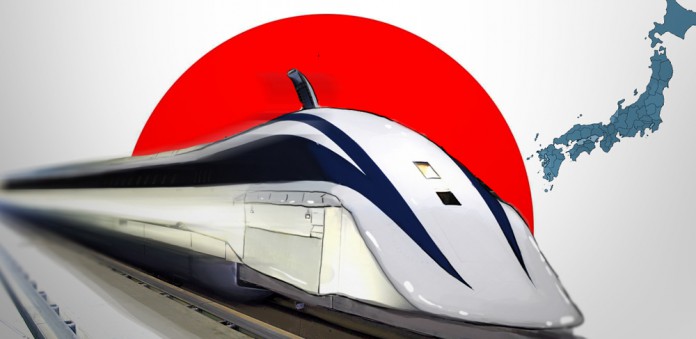Lexi Weyrick
Staff Writer
Illustration by Amanda Excell, Staff Illustrator
Magnetic levitation technology, or maglev technology, has been around for around a century, though countries like Japan are just now pushing the boundaries of how far maglev can go. Recently, Japan has been testing maglev lines they have developed in order to attempt to safely reach speeds of around 315 miles per hour.
Maglev technology utilizes powerful magnets to increase speed by taking the friction of a train’s wheels on a track out of the equation. Instead, the train is guided with the curve of the rail and is suspended using the magnets, so the train is quite literally levitating off of the track. Maglev trains do not require any fossil fuels to propel forward; instead, the combination of turning on and off the electromagnetic field created by the track works to push the train forward, helping it gain momentum very quickly. The ride on maglev trains is smoother than that of a commercial train and is much quieter.
Currently, more places than Japan have begun to employ maglev technology. China has a maglev train that connects passengers from Shanghai to Pudong International Airport in 8 minutes, accelerating to speeds of 431 kilometers per hour. Germany previously used maglev trains for commercial passenger transport, but no longer does, according to Maglev.net.
While Japan may not be the first or only country to develop Maglev train lines, no other country has attempted to create as large of track networks as Japan is planning on constructing. By 2027, Japan hopes to build a line stretching from Tokyo to Nagoya, and by 2045, from there to Osaka, according to The Verge.
Japan is making a huge investment in the construction of the Maglev lines, and due to the uncertainty of whether the investment will pay off in the distant future, Japan is offering to sell their technology to the United States. Additionally, Japan has presented the U.S. with the opportunity to build the first 40 miles of maglev track free of charge, with Japan taking the financial burden of the first step in instituting the train lines in America.
For the United States, a network of maglev trains could mean drastically reduced travel time. The U.S. is considering adopting the technology for transport between New York and Washington D.C. Maglev technology would make the travel time one-third of what it currently is to travel between the two cities.
Drawbacks are present with everything that seems too good to be true, however. Maglev trains are incredibly expensive to build: Japan shelled out $112 billion for their construction. Maglev trains are also not completely reliable as of yet; an accident with a Maglev train in Germany cost 25 people their lives.
Overall, the technology is highly promising for the future of the transportation industry, as well as reducing commuting time by a substantial amount, opening many doors for business and job opportunities. However, Bruce Einhorn of Businessweek remains pessimistic in regard to the adoption of the technology stateside.
“Well, maybe—if in the future, politicians in the U.S. suddenly decide to make a break from decades of under-funding public transport and instead devote gigantic sums to high-speed rail,” said Einhorn.
Maglev trains could be the key to moving America away from an industrialized society, in order to join the world in a futuristic society instead. Still, there are some hurdles to be cleared before the nation can turn its focus toward these miraculous magnetic trains.











